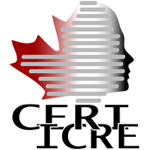|
 |
| Guidelines for Ambassador for Epilepsy Awards |
|
|
|
Guidelines for the Ambassador for Epilepsy Awards
The Ambassador for Epilepsy Award of the International Bureau for
Epilepsy and the International League against Epilepsy is intended as
recognition of outstanding international contributions to activities
advancing the cause of epilepsy. These activities should either be
performed at an international level or they should have an
international impact. Although not carrying a monetary value, the Award
reflects peer recognition of individual contributions. The Award
consists of an Ambassador for Epilepsy pin.
The recipients will be invited to attend the International Epilepsy
Congress to receive his/her Award and, if able to attend, will be
offered free registration to the Congress.
The Award will be presented at the International Epilepsy Congress,
following the election by the IBE and ILAE Executive Committees.
Criteria
1. The candidate must have made contributions above and beyond the call
of duty, either voluntarily or professionally, in any scientific,
clinical, educational or social support field of epilepsy. The
candidate must have achieved international recognition: in other words,
the individual has, by his or her efforts, significantly contributed
towards the development of epilepsy care and the well-being of people
with epilepsy in an international context.
2. The candidate must be proposed by one of the member organisations of
IBE or ILAE or by one of the members of the Joint Executive Committee
of IBE and ILAE.
3. The Joint Executive Committee of IBE and ILAE will elect a maximum of 12 persons every two years.
4. Nominees from the previous election, who did not receive the Award,
will automatically be considered a nominee for one following election.
Nominating Procedure
1. All IBE and ILAE chapters and all members of the Joint Executive
Committees of IBE and ILAE will be invited to nominate a maximum of 4
candidates for election in any two-year period.
2. An invitation for nominations must be distributed to all chapters
and members of the Joint Executive Committee 6 months prior to
election. It must be accompanied by a list of those who have already
been nominated, but not elected, in the previous election and who are
eligible for election again.
3. The name and curriculum vitae of each nominee must be sent to:
International Bureau for Epilepsy,
253 Crumlin Road,
Dublin 12,
Ireland
no later than 3 months prior to the date of election, together
with a completed copy of the nomination form, supplied with the
invitation, and a letter setting out the reasons why his/her
contribution has been sufficient to be considered for this Award. The
nominator must sign this form and the curriculum vitae must be no more
than 3 pages in length.
Election Procedure
1. The nominations must be distributed to each member of the Joint Executive Committee.
2. Each candidate should have a member of the Joint Executive Committee to defend him/her prior to the vote.
3. Voting upon nominations will be carried out by a secret ballot.
4. Each Joint Executive Committee member may vote for as many or as few
candidates as he/she wishes. To be accepted, a candidate must be
approved by an absolute majority of the members of the Joint Executive
Committee present.
5. A maximum of 12 candidates will be accepted.
6. If less than 12 candidates receive a majority vote then, after discussion, the voting procedure may be repeated twice.
7. The decision of the Joint Executive Committee is final.
8. Immediately following the election, the new Ambassadors and their
nominators will be informed of their appointments. Recipients will be
invited to attend the International Epilepsy Congress to receive their
Awards.
9. The Ambassador for Epilepsy Awards will be presented by the
Presidents of IBE and ILAE. Awards will be presented individually,
following a brief outline of achievement of the recipients, to those
assembled.
10. Information concerning the Ambassador for Epilepsy Awards must be
included in the materials distributed to the congress delegates and
will be published in Epilepsia, Epigraph and the International Epilepsy
News at the earliest opportunity following the presentation.
|
|
|

|
